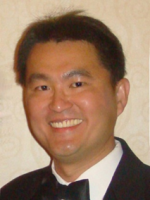Distinguished iNANO Lecture: Few-Atom Silver Cluster-Based Biosensing and Advanced Molecular Tracking Microscopes
Assistant professor Tim Yeh, Biomedical Engineering Department, University of Texas, Austin,Texas, USA
Info about event
Time
Location
The auditorium of the iNANO House (1593-012), Gustav Wieds Vej 14, 8000 Aarhus C

Assistant professor Tim Yeh, Biomedical Engineering Department, University of Texas, Austin,Texas, USAFew-Atom Silver Cluster-Based Biosensing and Advanced Molecular Tracking MicroscopesIn the past decade, nanomaterials have been used to develop new signal-based amplification assays, aiming to reach specificities and sensitivities superior to those of the traditional target-based amplification methods. I have been working on a new class of fluorescent nanomaterials, the few-atom noble metal nanoclusters, that show many intriguing and useful photophysical properties. In 2010, my colleagues and I discovered that “guanine proximity” could transform dark silver nanoclusters (templated on DNA) into bright red fluorescent species. Based upon this finding, we invented a new molecular probe, NanoClusters Beacon (NCB), which lights up tremendously upon binding with specific DNA targets. There are many benefits of NCBs, including design simplicity, low cost, one-step preparation process, and potential to achieve an ultrahigh S/B ratio as NCBs do not rely on F?rster energy transfer as the fluorescence on/off switching mechanism. The fluorescence activation and color switching properties of NCBs have led to the development of new signal-based amplification assays. One example is the multicolor sensor, called chameleon NCB, for SNP detection. Other than molecular probes, our lab is also developing state-of-the-art single-molecule 3D tracking techniques using one- or two-photon microscopy. One critical issue in single-molecule detection is the fast diffusion of small molecules in solution, making it difficult to observe a target molecule longer than the transvers time required to cross the field of view of a microscope. To extend this observation time, many physical immobilization schemes have been developed. However, these schemes are not suitable to study the chemical reactions in complex environments which involve dynamical processes spanning multiple scales in both time and space. As a result, there has been a huge driving force in developing 3D molecular tracking techniques which enables long-term study of single molecules. We are building state-of-the-art 3D molecular tracking microscopes to investigate the transport dynamics of EGFR inside live cells. The acquired information from 3D tracking microscopes will shed light on both receptor biology and potential therapeutic targets of anti-EGFR therapies for clinical applications. | |
| Host: Assistant professor Megan Yi-Ping Ho, Interdisciplinary Nanoscience Center, Aarhus University |
